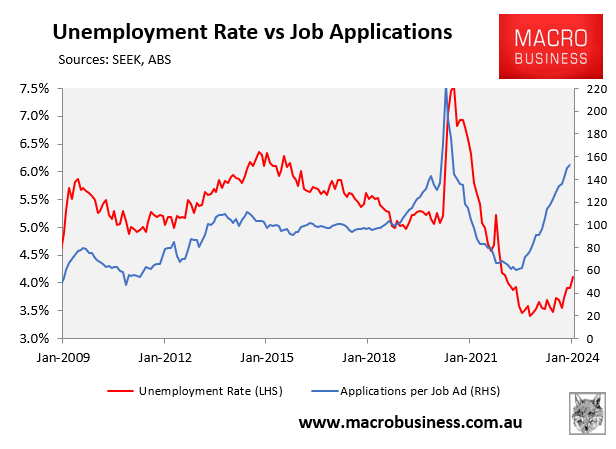US Federal Reserve rate cuts are still coming, in my view, but keep getting pushed back. Goldman:
In a speech this evening, Governor Waller said that he is “going to need to see at least another couple more months of inflation data before I can judge whether January was a speed bump or a pothole” and that “delaying rate cuts by a few months” is unlikely to hurt the economy.
Because there are only two rounds of inflation data and a little over two months until the May FOMC meeting, his comments suggest to us that a rate cut as early as May, which we had previously expected, is unlikely.
Comments from other Fed officials this week and the minutes to the FOMC’s January meeting have also suggested that the first cut is likely to be delayed until June.
President Harker argued that the “greatest economic risk” to the achievement of the FOMC’s goals “comes from acting to lower the rate too early,” and Governor Bowman emphasized that the time for rate cuts was “certainly not now.”
President Kashkari noted that he wanted to “get a little bit further away before we start lowering rates,” and President Bostic said that he expected that the FOMC would “start returning our policy stance to a more neutral stance in the summer time.”
…it now looks more likely that the FOMC will wait to cut until year-on-year inflation is even closer to 2%.5.
We have therefore dropped the May cut from our forecast but continue to expect cuts in June, July, September, and December, for a total of 4 in 2024 (vs. 5 previously).
We have added an additional cut to the end of our forecast and now expect 4 more quarterly cuts in 2025 (vs. 3 previously).
This implies no change to our 3.25-3.5% forecast of the terminal rate
Compare this with Westpac in Australia:
For Australia, we have pencilled in the first cut occurring at the late-September Board meeting, followed by another in November. Our thinking on the timing is as follows.
First, this expectation is predicated on the basis that things turn out broadly as we (and the RBA) expect. Inflation continues to decline, while growth remains soft in the first half of the year but does not fall away completely. Unemployment drifts up but does not rise precipitously.
Second, we take as given that the current stance of monetary policy is restrictive. This aligns with the RBA’s view and is supported by various indicators including credit growth and the drag from interest payments on household income. If the RBA maintained restrictive policy on an ongoing basis, growth would slow so much that inflation would undershoot the RBA target and keep falling. The decision to reduce the restrictive stance of policy – and eventually normalise to a more neutral stance – is therefore a question of when, not if.
Third, monetary policy operates with a lag, and the RBA knows this. They will not wait until inflation is already in the target range. They will start moving ahead of this point; Governor Bullock has acknowledged this in Parliamentary testimony. But as the Governor has also pointed out, they will want to wait until they are confident that inflation is declining on the desired trajectory. They want to be sure that inflation will be sustainably back inside the 2–3% target range by end-2025 and around the midpoint of the range by mid-2026.
Our Mr Magoo Treasurer has done it again with his RBA unreform, guaranteeing that the bank will move too slowly if needs be by shifting to six weekly meetings. That guy is honestly some macro curse.
We have a March, May and June RBA meeting in the first half of the year. The RBA’s reaction function is going driven by rising unemployment:

I doubt we’ll see enough of a rise by March, but the May meeting will have another three Labour Force reports to work with, so it’s a good bet the RBA will have shifted to an easing bias by then.
Unbelievably, the June meeting is the same day as the following Labour Force report. I don’t know if they will have the data beforehand, so that throws some doubt over it.
But I’d bet June for the first cut, one week after the Fed meeting.
That said, there is a much greater risk of the Fed being pushed back again than for the RBA.

